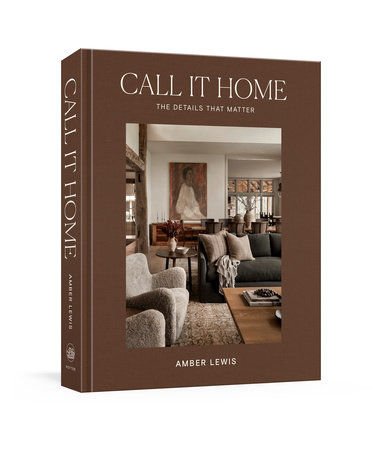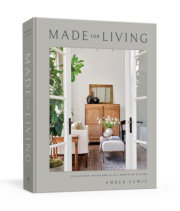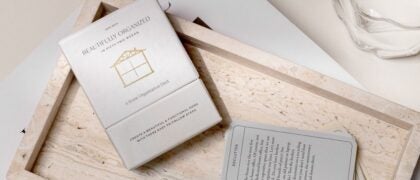Introduction I have always placed great value on the importance of our living spaces to our quality of life. Of course, we all know the age-old saying “Home is where the heart is,” but home is also where I find inspiration, emotional security, and all-around peace. Many of us have been fortunate enough to also learn that a home can also be where we work and even where we take our “staycations.” While it might start out as a structure with four walls and a roof, a home can be transformed into a place that also brings comfort.
Spending the last decade as an interior designer has truly been a joy. With my company, Amber Interiors, I found my niche, and I now have not only a career doing what I love most, but also a platform on which to share my life’s work with others. I do not take this responsibility lightly, and with each new project I embark upon, I strive to create better spaces—for my clients, for myself, and for anyone following along on social media.
Still, as any designer knows, when it comes to designing a unique space—one that isn’t merely a lather-rinse-repeat of the same room over and over—the struggle is real. Thanks to the Internet, we are all exposed, time and again, to images of interiors that lack that special, timeless quality that makes a space unique. Oversaturation of any one trend can make it difficult to define and hone your own style. After all, it can be hard to differentiate what everyone else is doing from what genuinely resonates with you.
For years, I have been homing in on my personal aesthetic and have tried to push myself creatively. But even I—a professional designer who should know better—have fallen prey to a design fad or two, only to ask myself a few years down the road,
What was I thinking? So, in order to pull together all the elements of a space I am designing without getting caught up in passing fancies, I have learned to ask myself a few key questions:
• Will I like this design element a decade from now?
• Will this design look like it was done in [insert year] or at any point over the last fifty years?
• Is this design a true reflection of my personal aesthetic?
• Does this design feel one-of-a-kind, or like something I have seen done time and time again?
When designing a home, you find yourself asking a lot of questions like these and struggling to come up with the answers. In writing this second book, I have aimed to create a framework for simplifying this complicated process.
I want to help you find your personal style!
While I’ve been a professional interior designer for more than fifteen years, I’ve been at this design thing in one form or another for as long as I can remember. (Picking paint colors before the age of ten totally counts, right?) As with my design aesthetic and personal taste, things were quite different when I started Amber Interiors in 2011. Back then, the furniture and home spaces were dedicated mainly to the likes of national retailers, and my current design and entrepreneurial heroes were only starting to pave the way for an evolution in interior design, at least in the digital world. I started dabbling in DIY, made pillows, restored furniture—I documented everything and shared my work with whoever cared to read about it on the internet.
My approach to it all was quite simple: to be the most genuine version of myself by doing what I loved most, which was to create and design. I was starting from scratch in what was, for me, uncharted territory, and I had nothing to lose. I thought, What could go wrong? Well—I learned—a lot! It turns out that, when building a home, nothing is guaranteed, but you can hang your hat on good old Murphy’s Law.
Still, you’ve gotta roll with the punches. As a budding designer and a hardheaded, fiercely determined person to the core, I had some lofty goals I was hell-bent on achieving. Did this happen within the timeline I hoped for? Absolutely not. Frankly, I’m still working on a few of them, and on some days, I just want to give up. It has taken years of trial and error—building a strong, dependable team and taking a few risky chances on unknowns—to get to where I am today. Above all, it was important for me to stay true to what I believed in—so, I opted out of taking on investors. I started making moves toward immediate financial independence so that I could retain control of how my business operated, both logistically and creatively. It wasn’t easy to build a business this way, but looking back on it now, I wouldn’t change a thing.
I often think about my design career as a journey, one that started with a deep love of nature and the outdoors inspired by the places I visited as a child and by the California beach where I grew up. Decorating window displays in retail shops in my early twenties led me to discover myself and to focus my energies on what is now known as Amber Interiors. Then I came to the most recent and jarring mile-stone in my journey. In 2020, right before I turned forty, I was diagnosed with multiple sclerosis (more commonly known as MS). The diagnosis rocked my world, of course, but it also, ultimately, gave me a level of strength and perseverance I didn’t know I possessed.
When I look back on that journey now, I see it as necessary to constructing the foundation for everything I currently have in my life. My experiences, good and bad, have made me who I am today. I have had to make countless tough decisions and sacrifices to get to where I am now, to experience many things, both positive and negative, until I learned to trust my instincts. This doesn’t mean I get it right every time. In fact, I can promise you I don’t always. My point is that you grow with your journey, and I have so much to share about mine.
If you’ve read my first book,
Made for Living, you may see some noticeable differences between this book and that one. Chalk it up to evolution: I have learned so much about myself and about interior design over the past couple of years. In that earlier book, I focus on my stylistic preferences when designing a space. In these pages, I’m going to take you through the details, and specifics involved, when designing several homes.
So, let’s get personal, let’s talk business, and, of course, let’s share design.
Copyright © 2023 by Amber Lewis. All rights reserved. No part of this excerpt may be reproduced or reprinted without permission in writing from the publisher.














